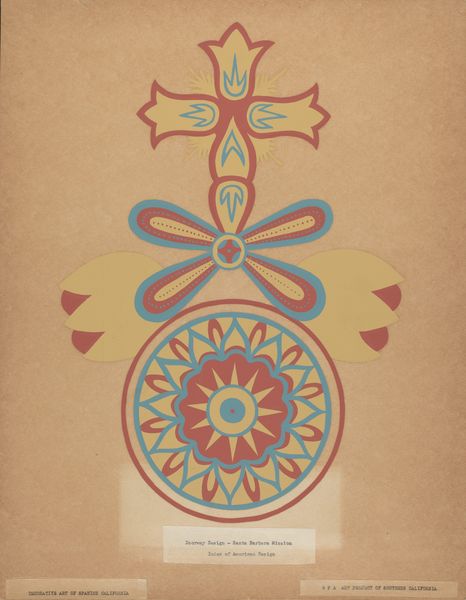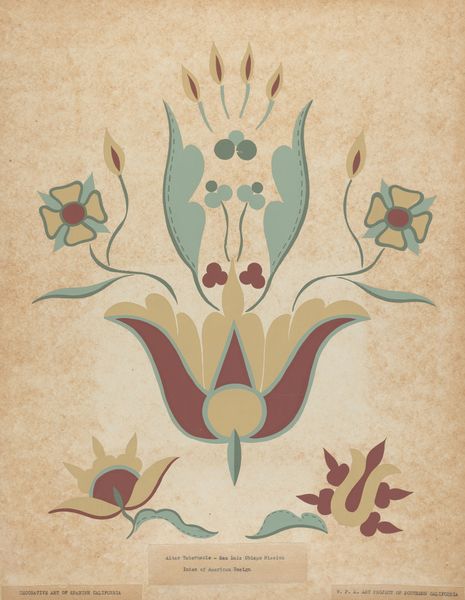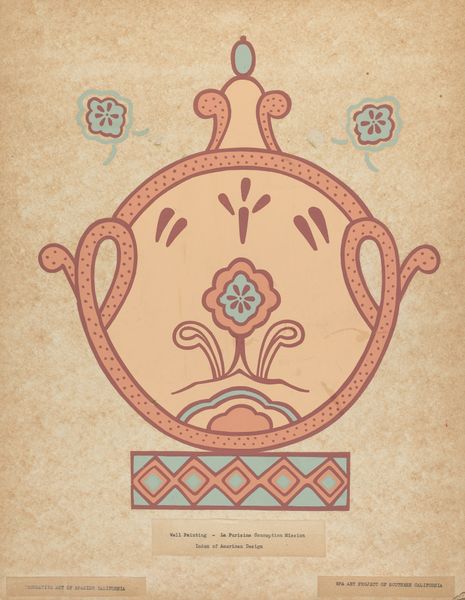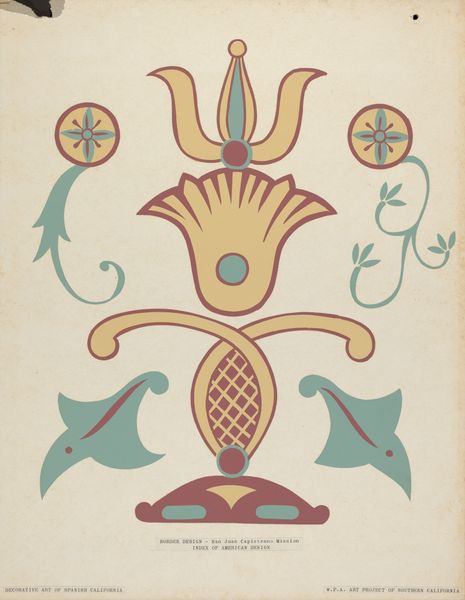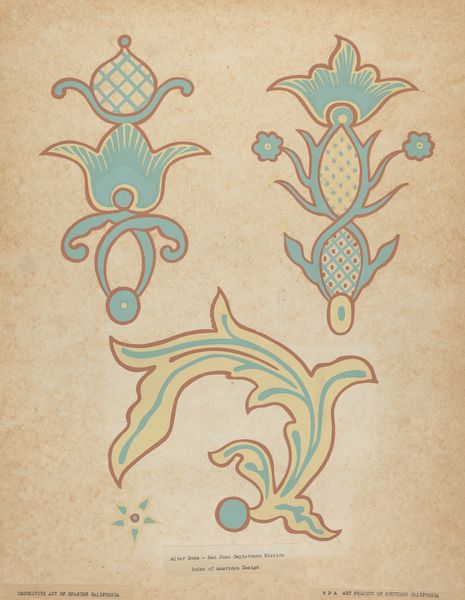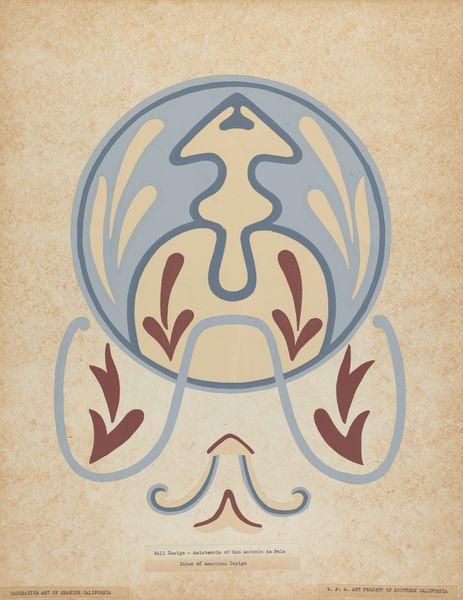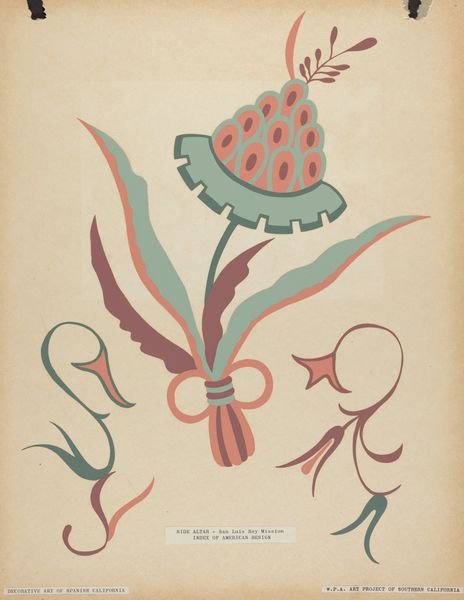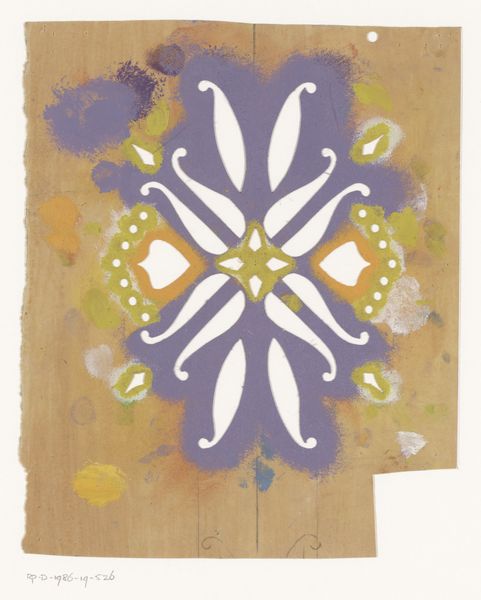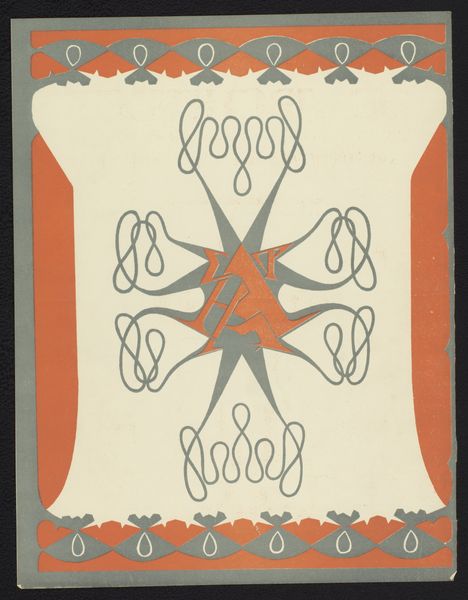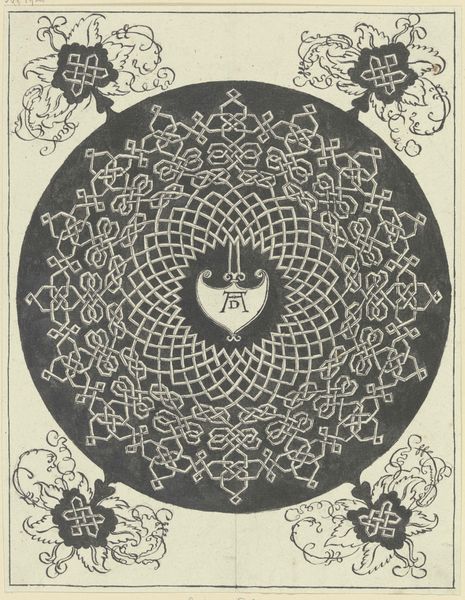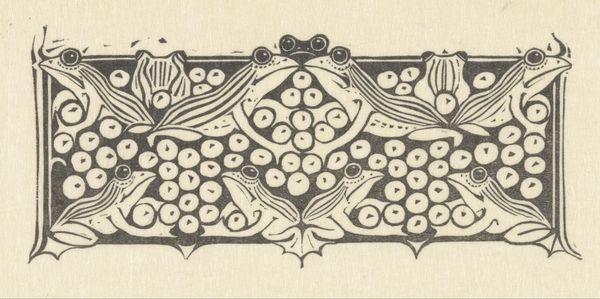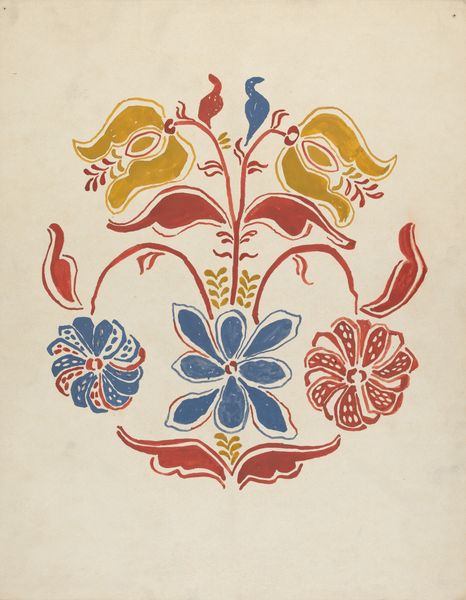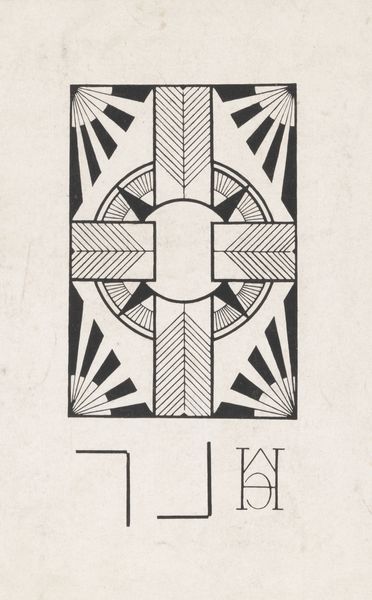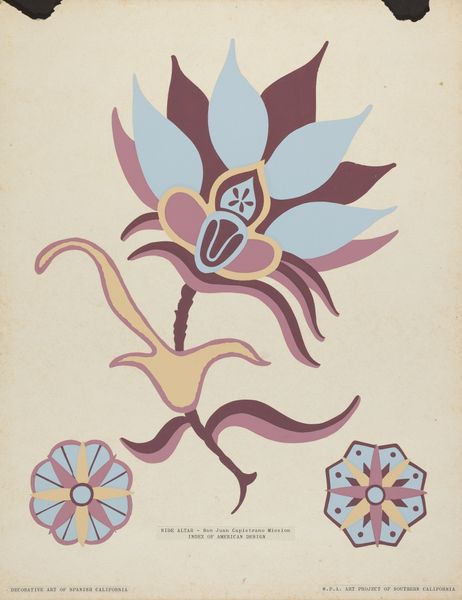
Santa Barbara Mission Doorway Design from the portfolio "Decorative Art of Spanish California" 1935 - 1942
0:00
0:00
drawing
#
drawing
#
organic
#
pattern background
#
organic pattern
#
geometric
#
pattern repetition
#
islamic-art
#
decorative-art
Dimensions: overall: 45.7 x 35.5 cm (18 x 14 in.)
Copyright: National Gallery of Art: CC0 1.0
Editor: Here we have "Santa Barbara Mission Doorway Design from the portfolio 'Decorative Art of Spanish California'," dating from 1935 to 1942. It's a drawing by an anonymous artist and the patterns feel quite mesmerizing. What can you tell me about this design? Curator: This drawing highlights the complex cultural interactions present in Spanish California. The mission system itself represents a collision of cultures – the imposed religious and social structures clashing with Indigenous traditions and aesthetics. The decorative art produced within these missions often reflects this hybridity. Editor: So you see it as more than just decoration? Curator: Absolutely. Consider the geometric and organic patterns; the interplay reminds us of Islamic artistic influences that traveled through Spain and were then carried over to the Americas. It’s important to think about how these symbols would have been received and understood by both the colonizers and the Indigenous populations they sought to convert. Do you notice anything specific about the use of the cross at the top? Editor: Well, it's very stylized... almost floral. Not what I'd expect. Curator: Exactly. This blending of Christian symbolism with other visual traditions served a very specific purpose. It was about making the new religion more palatable, more relatable, to the Indigenous people. Think of it as a visual strategy of cultural adaptation, though adaptation in the service of colonial power. Editor: I hadn’t considered how manipulative it could be, this aesthetic merging. It really makes you think about the power dynamics at play in creating and viewing art. Curator: Precisely! Seeing art as embedded in historical, social, and political currents allows us a richer, and often more troubling, understanding. This seemingly simple design speaks volumes about cultural exchange, religious conversion, and the exercise of colonial power.
Comments
No comments
Be the first to comment and join the conversation on the ultimate creative platform.
